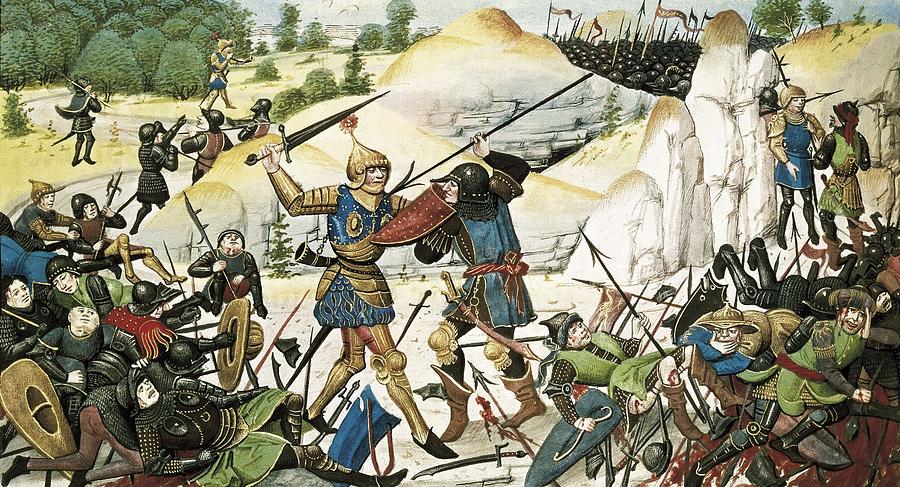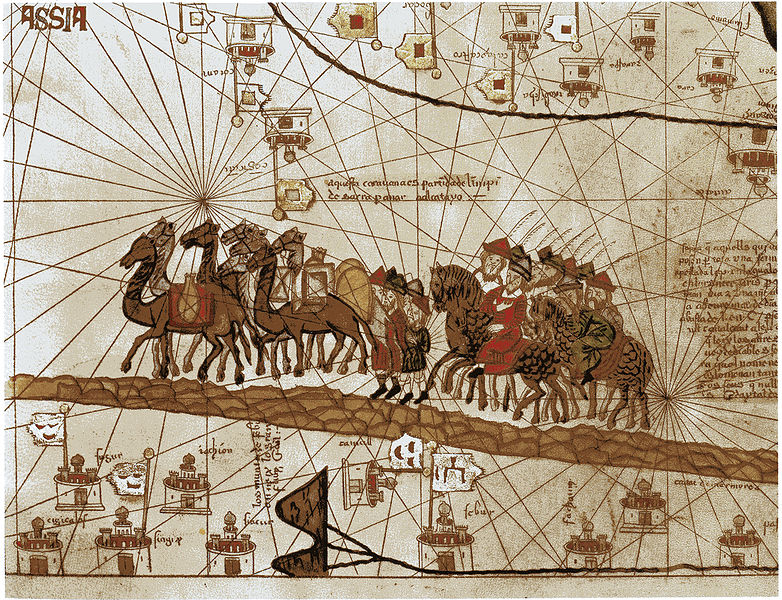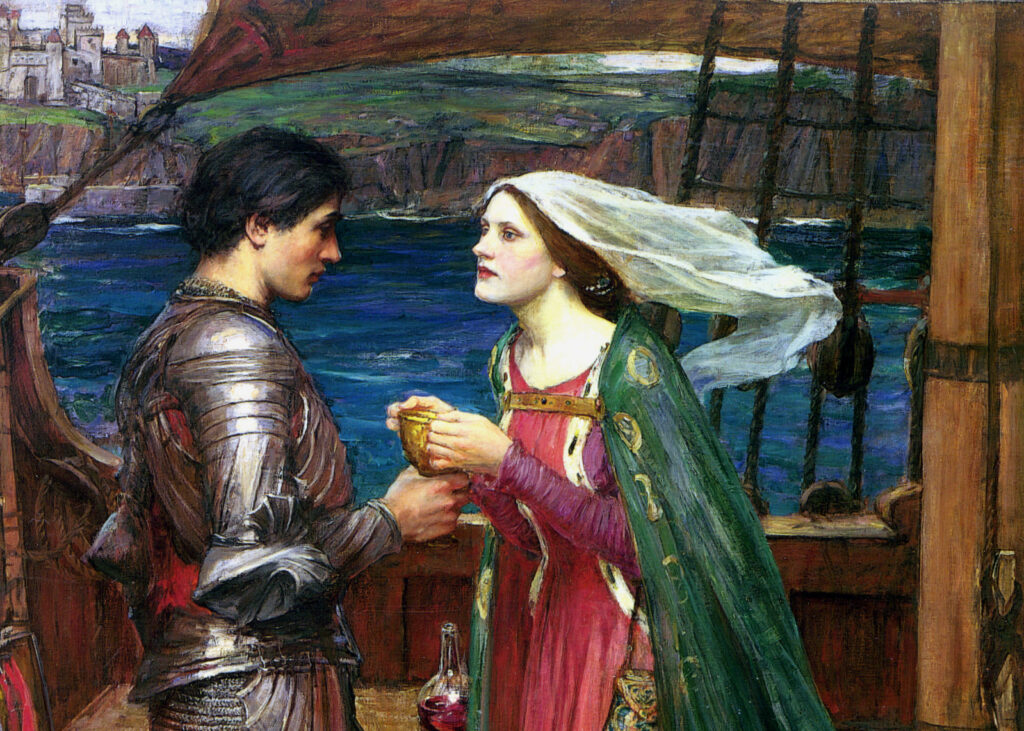Home » Posts tagged 'medieval'
Tag Archives: medieval
The Dream of the Rood
anonymous (Anglo-Saxon)
7th-8th century
(In a vision, the cross of Christ reflects with awe on its part in the death of God.)

“The most beautiful of the medieval religious poems”. This is often said of The Dream of the Rood. The first time I read this assessment—I had never even heard of the poem—it was by the Anglo-Saxon scholar R. K. Gordon in the colorful old Everyman Library series. The description as beautiful captured my attention. And it is beautiful. The vivid imagery, the incorporation of heroic and mystical themes, the profound devotion, the ethereal vision, the very language. Seeing such a work called beautiful is gratifying, for it highlights a virtue that is often languishing in recent religious literature, and religious sensibility in general. In both East and West, the enjoyment of beauty has frequently been marred by a suspicion that it may tempt one to elevate the lower over the higher, or to submit to illusory or distracting pleasure. Calling a religious poem “beautiful” recalls a time and a place when beauty was a central value in the building of churches, in the composition of sacred music, in devotional images and writings, and even in the grounds for the faith commitment itself. There have been times and places when the contemplation and enjoyment of beauty was widely embraced, on the idea, as Aristotle said, that “Beauty is the gift of God.”
The Song of Roland
(La Chanson de Roland)
anonymous (Turold?)
late 11th century
(The mightiest and noblest of Charlemagne’s crusading knights is betrayed, but his companions stand fiercely by him as the Saracens attack.)

The year is 778. The brave knight Roland and his army, led by eleven of the noblest warriors in Christendom, watch in horror as an army five times larger than their own approaches through the Roncevaux Pass in the Pyrenees. Roland’s friend Oliver urges him to call for Charlemagne’s aid with his famed olifant horn. Roland will not. He will trust to God, to France, and to his sword Durendal. He shouts a rallying speech to his men– this is their day to shine. They banish fear and meet the Saracens. This is an anthem of a book– a mighty, direct, vibrant punch of a poem. It is simple, stylized, yet well balanced; powerful, but not without subtlety. It is short, as epics go– slim and to the point, forget the historical backgrounds and love stories. This is the earliest surviving and the best of its genre– the “Songs of Deeds”, or Chansons de geste, of medieval French literature, of which there were hundreds. In style, in its portrayal of the values of chivalry, in its composition, and in its spirit, it is the supreme knightly adventure poem.
The Travels
(Il Milione)
Marco Polo
(with Rustichello of Pisa)
1299
(An Italian explorer treks fearlessly into the unknown East, and discovers astonishing cultures and kingdoms no European had ever seen).

We are fortunate that Marco Polo lived long enough and expended the energy to record the greatest travels ever performed by any man to his time and for very long afterwards. He dictated– apparently from memory– his adventures to a romance-writer Rustichello of Pisa while they were prisoners of war in Genoa. No repetitive or trivial diarizing here—this is a very entertaining work, often fascinating and at times hilarious. I am struck, as Polo was, by the variety of customs observed in the many areas through which he trekked. I am also intrigued by the amount of wealth those in power were able to amass; such wealth that Kublai Khan, for the prime example, could romp in several sumptuous palaces with manicured grounds and scenic paths like those of the richest modern European monarch. It surely seems that the book’s two repeated claims may well be true: that Marco Polo had traveled further and knew more of the world than any other man who had ever lived; and that the Mongol empire under Kublai Khan was the largest empire in subjects and geographical area ever to have existed.
The Romance of Tristan and Iseult
(Le Roman de Tristan et Iseut)
Joseph Bédier
1900
(A knight and a lady pursue their magical love through bloodshed and sorrow.)

When tales pass through centuries of retellings, they tend to become what of audio media we would call “overproduced”: too many interpreters have slanted the story their various ways, too many embellishments and new episodes have been inserted, too many accommodations and updates have aimed at suiting the fancies of each audience. In the process the story can lose some of its grip on our imagination and our romantic sensibilities. It can be so cobbled and abused that we are left to distill the heart of it as best we can from a variety of sources. The only way such a beautiful old tale could ever be told today in anything like its original form and spirit, would be for three literary virtues to unite: a single author must be simultaneously an expert scholar, a great poet, and above all, modest. Only a scholar will know the history of the work; will be able to distinguish the wheat from the chaff in elements of theme, characterization, and plot; and will sufficiently understand an ancient teller’s perspective so as to effectively reproduce it. And only a great poet will be able to convey this perspective, and the story itself, with convincing unity and supreme skill; expectations of quality and beauty are lofty when we pick up a beloved and popular story. And finally, many a great poet and scholar will have great pride as well, in which case there will be too much of the writer and not enough of the legend in the text. Granted, we love our authors’ egos when it is them we want to see; but if the aim is to represent something of the original (or at least old) character of a romance, an author must exercise admirable self-control. We can thank Joseph Bédier for being this author in all respects for the legend of Tristan & Iseult.
Pearl
The West Midlands Poet
14th century
(A father struggles to recover faith and peace after losing his baby daughter.)

Diversity of structure is one of the wonders of poetry. Today’s poets often celebrate freedom from structure, which has its own beauty. The medieval mind cherished a different kind of beauty, one that is neither extinct nor obsolete today, just overlooked. It is the elegant euphony of placing what one wishes to convey into a strict, unifying framework. Rather than delivering a point casually or even haphazardly as we may do in everyday life, the medieval poet would conform ideas to a predetermined scheme of alliteration, rhyme, stress, mid-line breaks (caesurae), and a multilevel organization of lines into stanzas and groups of stanzas, interconnected by strands of repetition. Surely it is a handicap to expression—but this is part of its charm! The skill required to create a meaningful poem that has a detailed or complicated structure is so great that its demands separate the geniuses from the dabblers. Modern poetic sensibilities may balk at this comment, but in this age where much art and poetry is still very polarized into distinct “high” and “low” forms, I think these sensibilities are a little hypocritical. It seems in fashion today both to create art that only a fraction of society can understand, and at the same time to repudiate notions of hierarchy, including hierarchy of understanding, wherever they appear. Generally the medieval mind, cultivated within the feudal economic and political system and a strongly hierarchical Church, was more candid about social stratification. Medievals did not tend to preach egalitarianism except under God, which would be realized only in another world. This perspective characterized their art as well as society. The structured medieval poem’s handicap to expression is in itself, aside from its resulting euphony or atmosphere, a badge of excellence.


